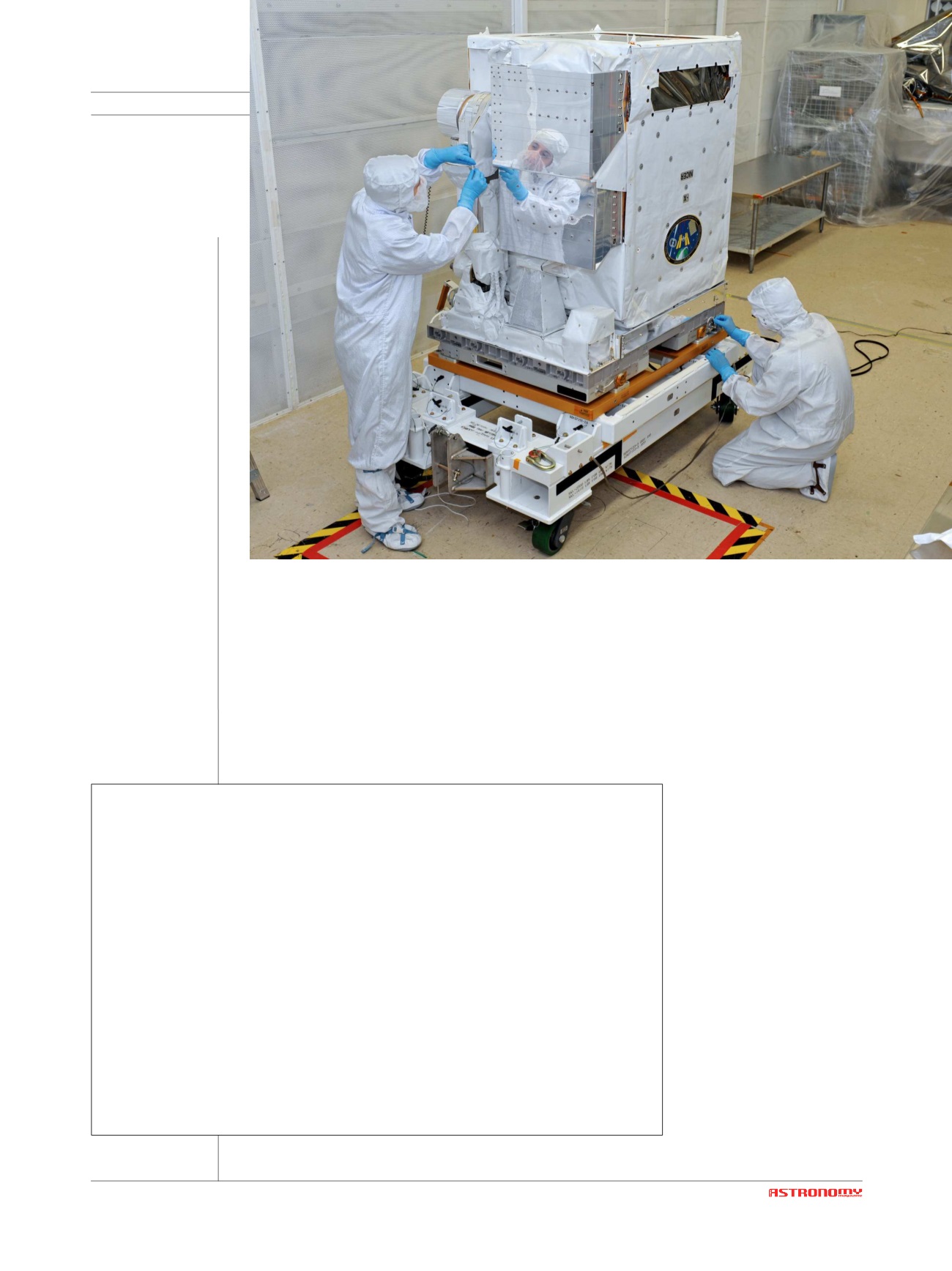

SEPTEMBER-OCTOBER 2017
ASTRONAUTICS
Since Walter Baade and Fritz Zwicky hy-
pothesized the existence of neutron stars
in 1934, it was thought that those extreme
heavenly bodies were composed solely and
uniformly of neutrons, because in addition
to smashing the atomic nuclei, the enor-
mous pressure would have pushed the elec-
trons against the protons, generating neu-
trons. Today we know that things are more
complicated and that some thorny issues
remain unsettled, first among them the re-
lationship between mass and diameter.
This situation is now des-
tined to be resolved thanks
to a new NASA mission that
began operating in June
with a nominal duration of
18 months.
It is called NICER, for Neu-
tron star Interior Composi-
tion ExploreR. The acro-
nym is a little forced, but
the full name makes the
mission’s purpose clear.
Launched on 3 June with
a SpaceX Falcon 9 rocket,
NICER is a space telescope
for soft X-rays (0.2-12 keV),
which, rather than orbiting
around the Earth by itself,
does this while hitched to
the International Space Sta-
tion, to take advantage of
only provided an incomplete picture of
what lies beneath the surface: a thin layer
of atomic nuclei permeated by a flow of
electrons; next, a thicker, denser layer of
ions immersed in superfluid neutrons;
then, a liquid outer nucleus of supercon-
ducting protons; and finally, an inner nu-
cleus about which we know nearly no-
thing and for which various mathematical
models offer widely varying scenarios,
from superfluids dominated by neutrons
to degenerate matter composed of quarks.
N
ICER Mechan-
ical Engineer
Steven Kenyon
(left) and GPS and
Star Tracker Cam-
era Engineer Eric
Rogstad (right)
prepare NICER for
shipment to
Kennedy Space
Center in Florida.
The payload has
been deployed on
the International
Space Station (ISS).
[Barbara Lambert]
Below, this video
explains some of
what's known
about neutron
stars and pre-
views NASA's
Neutron star Inte-
rior Composition
Explorer mission
(NICER). [NASA]
















